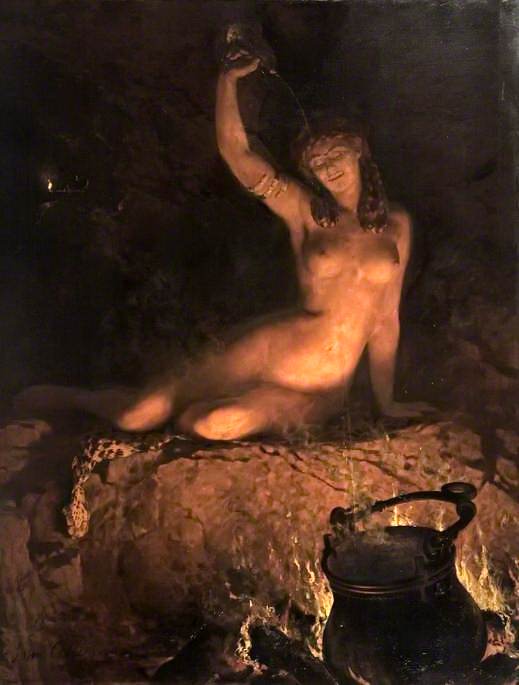Frans Hals: The Master of the Brush
Frans Hals, one of the most celebrated painters of the Dutch Golden Age, is renowned for his vibrant and dynamic portraits that capture the essence of his subjects with unmatched spontaneity. His mastery of the brush, characterized by loose and expressive strokes, has earned him a distinguished place in the annals of art history. Hals' work stands as a testament to his ability to breathe life into his paintings, creating images that resonate with vitality and realism.
The Early Years and Influences
Frans Hals was born in Antwerp in 1582, a city that was a thriving center of art and culture during the late 16th century. His family moved to Haarlem when he was still a child, likely due to the turbulent political situation in the Southern Netherlands. Haarlem, a city that would become closely associated with Hals' career, was an important hub for artists, and it was here that Hals would find his artistic voice.
Hals was deeply influenced by the works of the Flemish masters, particularly Peter Paul Rubens and Anthony van Dyck, whose vibrant use of color and dramatic compositions left a lasting impression on him. However, Hals' unique style diverged from the Baroque grandeur of his Flemish contemporaries, favoring instead a more naturalistic and direct approach to portraiture.
Portraiture and Innovation
Frans Hals' contribution to portraiture cannot be overstated. At a time when portraiture was often stiff and formal, Hals introduced a new level of informality and movement into his works. His subjects are frequently depicted in mid-conversation or with lively expressions, capturing a moment in time rather than a posed, static image. This approach was revolutionary and set Hals apart from his peers.
One of the most striking aspects of Hals' portraits is his use of light and shadow to enhance the three-dimensionality of his figures. His ability to suggest texture and form with just a few deft brushstrokes is remarkable. Hals' portraits often feature a limited palette, yet he was able to achieve a wide range of tones and hues, giving his works a sense of depth and realism that was unparalleled.
Masterpieces and Major Works
Among Hals' most famous works is "The Laughing Cavalier" (1624), a portrait that epitomizes his style. The subject, dressed in elaborate and richly detailed clothing, is captured with a mischievous smile, his eyes twinkling with life. The painting showcases Hals' skill in rendering fine details, such as the intricate lace and embroidery, while maintaining a sense of spontaneity and energy.
Another significant work is "The Banquet of the Officers of the St. George Militia Company" (1616), a large group portrait that displays Hals' talent for composition and his ability to convey the individuality of each subject within a collective setting. The painting is a masterclass in the use of light, with the figures illuminated against a dark background, creating a striking contrast that draws the viewer's eye.
Frans Hals' Technique and Style
Hals' technique was characterized by his use of impasto, a method where paint is applied thickly, creating texture and depth. This technique allowed Hals to create the illusion of movement and light, giving his paintings a vibrant and almost tactile quality. His brushwork was loose and free, often described as "bravura" or bold, and he was known for his ability to convey the essence of a person with just a few strokes.
Unlike many of his contemporaries, Hals rarely used underdrawings or preparatory sketches. Instead, he painted directly onto the canvas, a method that contributed to the immediacy and liveliness of his work. This approach required immense skill and confidence, as it left little room for error. Hals' mastery of this technique is evident in the fluidity and spontaneity of his portraits.
Legacy and Influence
Frans Hals' influence on subsequent generations of artists is profound. His innovative approach to portraiture, with its emphasis on realism and expression, laid the groundwork for future movements such as Impressionism. Artists like Édouard Manet and Vincent van Gogh admired Hals' ability to capture the human spirit with such vitality and sought to emulate his style in their own works.
Hals' reputation as a master painter was solidified during his lifetime, though he faced financial difficulties later in life, a common plight for many artists of his era. Despite these challenges, Hals continued to paint, leaving behind a legacy of work that would inspire and influence artists for centuries.
Frans Hals in the Context of the Dutch Golden Age
The Dutch Golden Age was a period of unprecedented artistic and cultural achievement in the Netherlands, and Frans Hals was at the forefront of this movement. The prosperity of the Dutch Republic during the 17th century created a thriving market for art, with wealthy merchants and civic institutions commissioning portraits and other works to display their status and success.
Hals' portraits were highly sought after by the burgeoning middle class, who appreciated his ability to capture not only their likeness but also their personality and character. His work reflects the values of the Dutch Golden Age, with its emphasis on individuality, civic pride, and the celebration of life.
The Rediscovery of Frans Hals
After his death in 1666, Frans Hals' work fell into relative obscurity, overshadowed by the rise of new artistic styles and movements. It was not until the 19th century that Hals' genius was fully recognized and appreciated. The art world began to take a renewed interest in his work, and his paintings were re-evaluated and celebrated for their innovation and technical brilliance.
The rediscovery of Hals was driven in part by the Impressionists, who admired his loose brushwork and ability to capture the fleeting effects of light. Exhibitions of Hals' work in major European cities helped to cement his reputation as one of the great masters of portraiture.
Frans Hals Today
Today, Frans Hals is regarded as one of the most important painters of the Dutch Golden Age, and his works are held in high esteem by art historians, collectors, and the public alike. His paintings can be found in major museums around the world, including the Rijksmuseum in Amsterdam, the Louvre in Paris, and the National Gallery in London.
Hals' legacy endures not only through his paintings but also through the continued study and appreciation of his work. Art scholars continue to explore the nuances of his technique and the cultural context in which he worked, further enriching our understanding of this remarkable artist.
Conclusion
Frans Hals' contribution to the world of art is immeasurable. His ability to capture the essence of his subjects with such vitality and immediacy set him apart from his contemporaries and established him as a pioneer in the field of portraiture. Hals' work remains a source of inspiration and admiration, a testament to his enduring talent and his place in the pantheon of great artists. His art continues to captivate audiences, reminding us of the power of the brush to bring life to canvas.
Frans Hals, one of the most celebrated painters of the Dutch Golden Age, is renowned for his vibrant and dynamic portraits that capture the essence of his subjects with unmatched spontaneity. His mastery of the brush, characterized by loose and expressive strokes, has earned him a distinguished place in the annals of art history. Hals' work stands as a testament to his ability to breathe life into his paintings, creating images that resonate with vitality and realism.
The Early Years and Influences
Frans Hals was born in Antwerp in 1582, a city that was a thriving center of art and culture during the late 16th century. His family moved to Haarlem when he was still a child, likely due to the turbulent political situation in the Southern Netherlands. Haarlem, a city that would become closely associated with Hals' career, was an important hub for artists, and it was here that Hals would find his artistic voice.
Hals was deeply influenced by the works of the Flemish masters, particularly Peter Paul Rubens and Anthony van Dyck, whose vibrant use of color and dramatic compositions left a lasting impression on him. However, Hals' unique style diverged from the Baroque grandeur of his Flemish contemporaries, favoring instead a more naturalistic and direct approach to portraiture.
Portraiture and Innovation
Frans Hals' contribution to portraiture cannot be overstated. At a time when portraiture was often stiff and formal, Hals introduced a new level of informality and movement into his works. His subjects are frequently depicted in mid-conversation or with lively expressions, capturing a moment in time rather than a posed, static image. This approach was revolutionary and set Hals apart from his peers.
One of the most striking aspects of Hals' portraits is his use of light and shadow to enhance the three-dimensionality of his figures. His ability to suggest texture and form with just a few deft brushstrokes is remarkable. Hals' portraits often feature a limited palette, yet he was able to achieve a wide range of tones and hues, giving his works a sense of depth and realism that was unparalleled.
Masterpieces and Major Works
Among Hals' most famous works is "The Laughing Cavalier" (1624), a portrait that epitomizes his style. The subject, dressed in elaborate and richly detailed clothing, is captured with a mischievous smile, his eyes twinkling with life. The painting showcases Hals' skill in rendering fine details, such as the intricate lace and embroidery, while maintaining a sense of spontaneity and energy.
Another significant work is "The Banquet of the Officers of the St. George Militia Company" (1616), a large group portrait that displays Hals' talent for composition and his ability to convey the individuality of each subject within a collective setting. The painting is a masterclass in the use of light, with the figures illuminated against a dark background, creating a striking contrast that draws the viewer's eye.
Frans Hals' Technique and Style
Hals' technique was characterized by his use of impasto, a method where paint is applied thickly, creating texture and depth. This technique allowed Hals to create the illusion of movement and light, giving his paintings a vibrant and almost tactile quality. His brushwork was loose and free, often described as "bravura" or bold, and he was known for his ability to convey the essence of a person with just a few strokes.
Unlike many of his contemporaries, Hals rarely used underdrawings or preparatory sketches. Instead, he painted directly onto the canvas, a method that contributed to the immediacy and liveliness of his work. This approach required immense skill and confidence, as it left little room for error. Hals' mastery of this technique is evident in the fluidity and spontaneity of his portraits.
Legacy and Influence
Frans Hals' influence on subsequent generations of artists is profound. His innovative approach to portraiture, with its emphasis on realism and expression, laid the groundwork for future movements such as Impressionism. Artists like Édouard Manet and Vincent van Gogh admired Hals' ability to capture the human spirit with such vitality and sought to emulate his style in their own works.
Hals' reputation as a master painter was solidified during his lifetime, though he faced financial difficulties later in life, a common plight for many artists of his era. Despite these challenges, Hals continued to paint, leaving behind a legacy of work that would inspire and influence artists for centuries.
Frans Hals in the Context of the Dutch Golden Age
The Dutch Golden Age was a period of unprecedented artistic and cultural achievement in the Netherlands, and Frans Hals was at the forefront of this movement. The prosperity of the Dutch Republic during the 17th century created a thriving market for art, with wealthy merchants and civic institutions commissioning portraits and other works to display their status and success.
Hals' portraits were highly sought after by the burgeoning middle class, who appreciated his ability to capture not only their likeness but also their personality and character. His work reflects the values of the Dutch Golden Age, with its emphasis on individuality, civic pride, and the celebration of life.
The Rediscovery of Frans Hals
After his death in 1666, Frans Hals' work fell into relative obscurity, overshadowed by the rise of new artistic styles and movements. It was not until the 19th century that Hals' genius was fully recognized and appreciated. The art world began to take a renewed interest in his work, and his paintings were re-evaluated and celebrated for their innovation and technical brilliance.
The rediscovery of Hals was driven in part by the Impressionists, who admired his loose brushwork and ability to capture the fleeting effects of light. Exhibitions of Hals' work in major European cities helped to cement his reputation as one of the great masters of portraiture.
Frans Hals Today
Today, Frans Hals is regarded as one of the most important painters of the Dutch Golden Age, and his works are held in high esteem by art historians, collectors, and the public alike. His paintings can be found in major museums around the world, including the Rijksmuseum in Amsterdam, the Louvre in Paris, and the National Gallery in London.
Hals' legacy endures not only through his paintings but also through the continued study and appreciation of his work. Art scholars continue to explore the nuances of his technique and the cultural context in which he worked, further enriching our understanding of this remarkable artist.
Conclusion
Frans Hals' contribution to the world of art is immeasurable. His ability to capture the essence of his subjects with such vitality and immediacy set him apart from his contemporaries and established him as a pioneer in the field of portraiture. Hals' work remains a source of inspiration and admiration, a testament to his enduring talent and his place in the pantheon of great artists. His art continues to captivate audiences, reminding us of the power of the brush to bring life to canvas.



